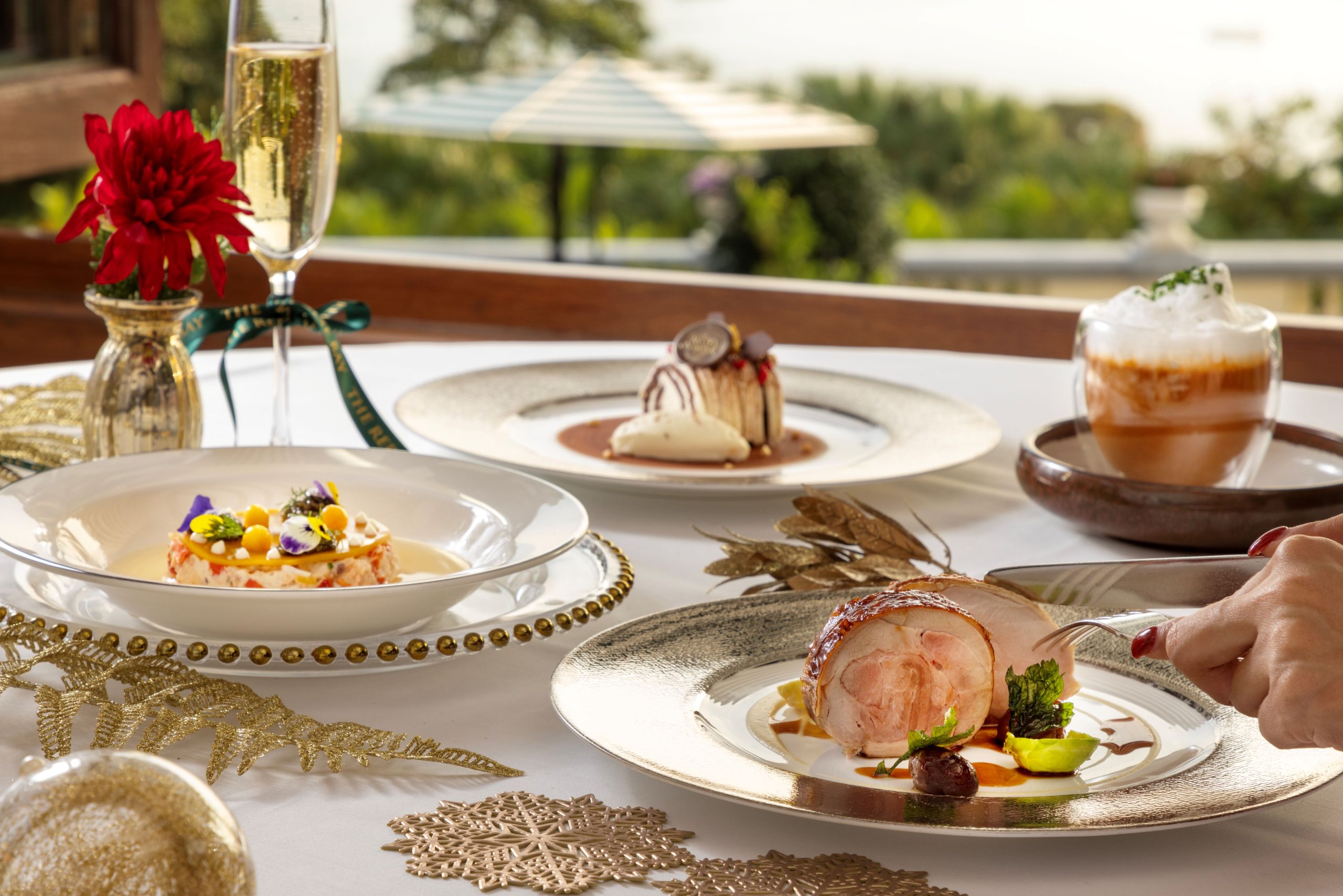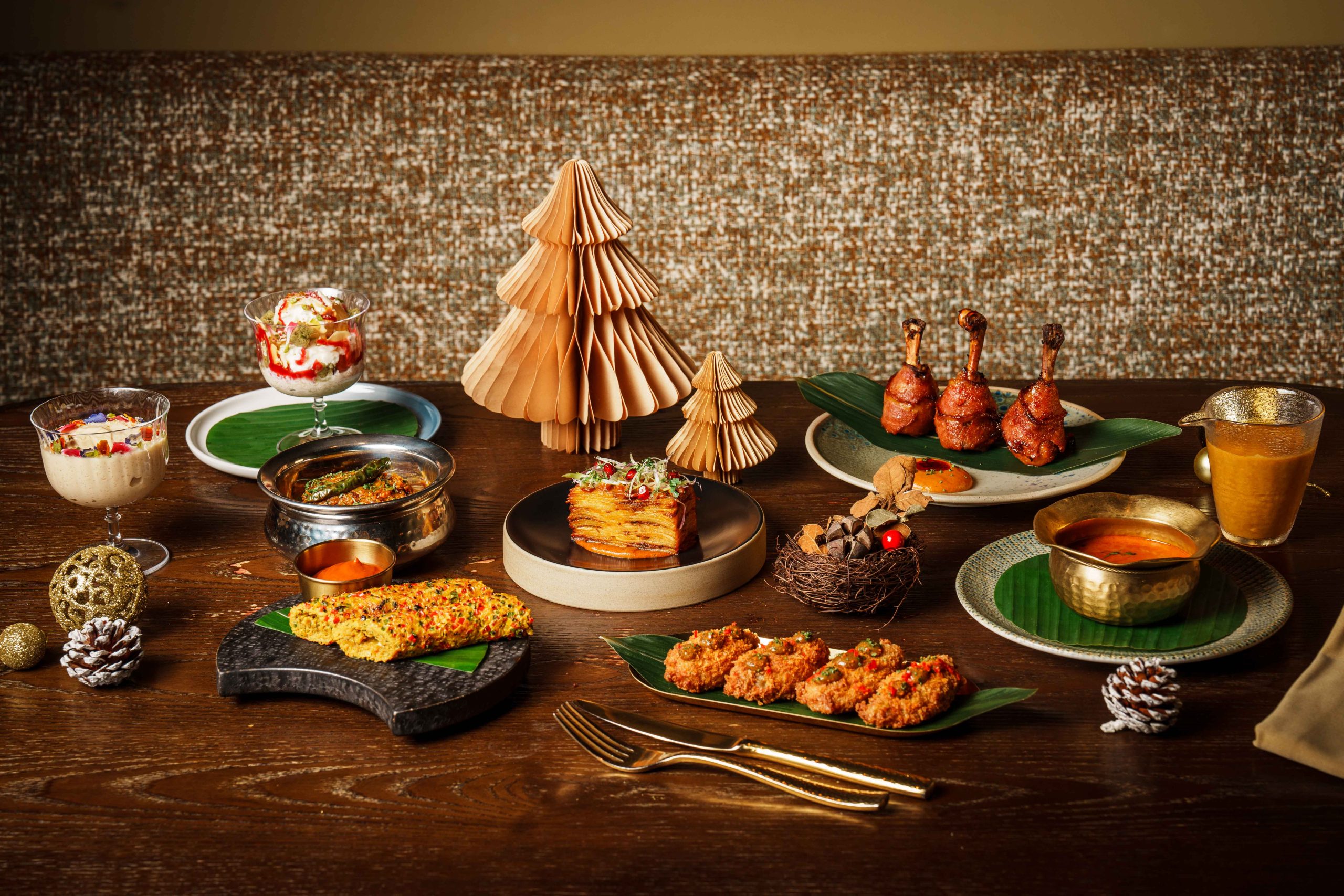
Vietnamese food is what everybody is talking about. Around the world, chefs are adding Vietnamese dishes to the menu and Hong Kong is not immune. #legend spoke with Bao La, the man behind Le Garçon Saigon and who now leads Le Petit Saigon; and also to Brian Woo, the Three Monkeys co-founder, who is in charge at Co Thanh.
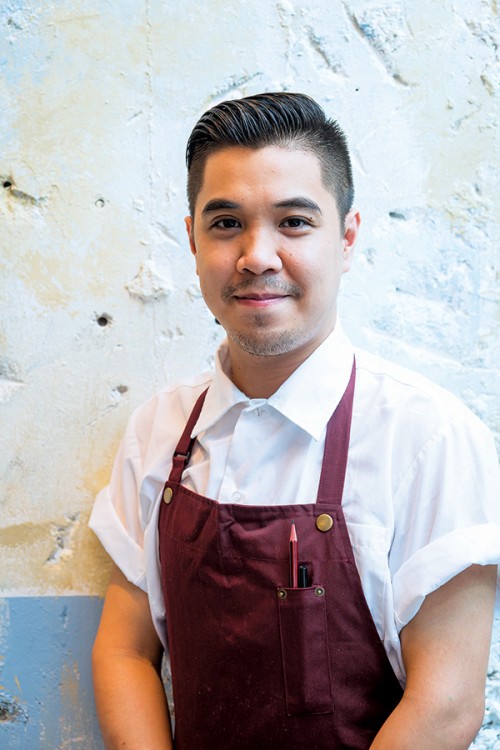
BAO LA
How old were you when you began cooking?
I think the age of seven, eight-ish. My parents had a restaurant in Brisbane, Australia. It was basically my after-school care and where I kept myself entertained as a kid.When did you discover your love of cooking Vietnamese food?
This probably didn’t come until later on, maybe during my university days. I just felt like cooking kept me out of trouble.What is your childhood favourite Vietnamese dish?
Fresh rice paper rolls. That was my first job in the kitchen: peeling prawns, assembling and rolling rice paper rolls. I would stand on oil cans, because I couldn’t reach the bench, and just roll. When mum still had the restaurant, she made the rolls to order.
Who is your biggest inspiration when it comes to cooking?
My mum and dad, but definitely more mum because dad would be working front of house and mum was in the kitchen. We would hang out there together, and she made most of the family meals. What I am doing today is all because of her.Tell us about your work experience before joining Black Sheep Restaurants.
When mum and dad retired, I lost my job. Luckily, I was in touch with Jowett Yu and Dan Hong, and they invited me to Sydney to work with them. I flew out the day after mum and dad closed the restaurant. I ended up working at Dan and Jowett’s Ms G’s restaurant for two years, and then helped open Mr Wong, a Chinese barbecue restaurant. After cooking a lot of Asian fusion food, I wanted to get back in touch with my roots, so I left Sydney and travelled to Vietnam. Jowett called me later and convinced me to help him open Ho Lee Fook.
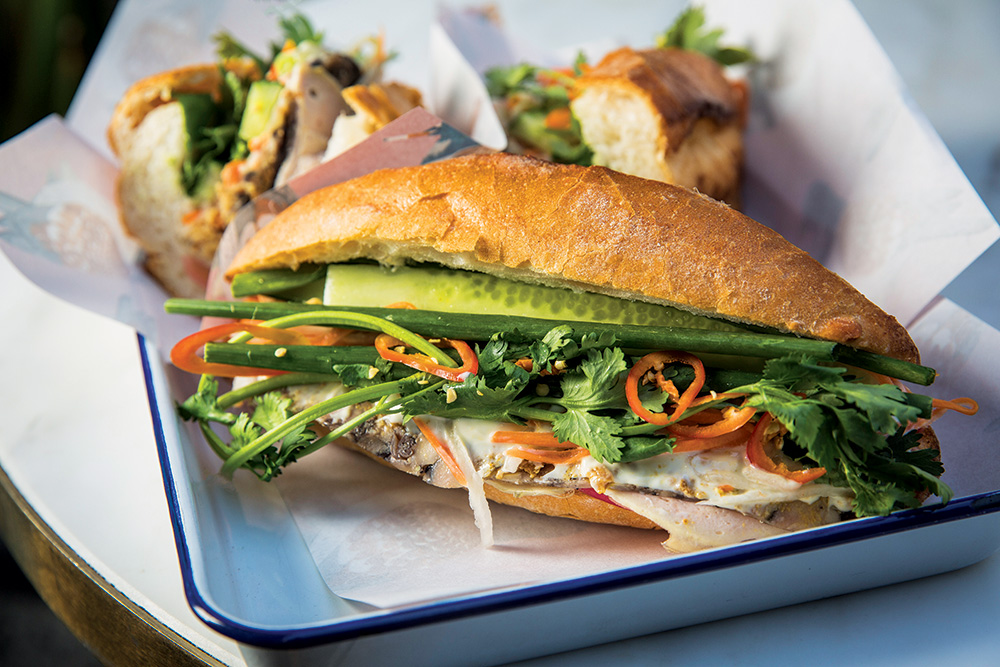
After the success of Le Garçon Saigon, how did you come up with Le Petit Saigon?
I was really strong on making Le Garçon Saigon a dinner spot, but financially it was not viable. Especially in Wan Chai, it’s really tough. We had to do a lunch offering but the kitchen was tiny. Then this site came up and we thought we could do something with the front and use the kitchen as a preparation area. Lunches are handled at Le Garçon Saigon and Le Petit Saigon specialises in banh mi.
What exactly is a banh mi thit and what makes a good one?
It came from the French, but the accent is from Cantonese, so it is pronounced “bun me”. Banh mi means flour cake or flour bun. Thit means meat but when people say it they usually mean pork. All elements are important to make a good banh mi thit. For example, the bread needs to look and feel like a baguette but chewy and airy inside. We have been working on on our bread for four months, just to get everything right. The bread is baked in a stone oven, which gives it an airy kind of heat. For the filling, we use five types of pork: rolled pork belly that’s brined, steamed with skin on for a chewy texture; we add pig’s head terrine that’s been stir-fried, rolled and pressed; two types of Vietnamese ham; and pork floss for some salt and umami flavours. We also add chicken liver pâté, chopped onions and season it with brandy. Acidic fresh herbs are added to balance out the richness of the pâté and the banh mi is finished with Vietnamese chillies.
When’s the best time to beat the crowds at Le Petit Saigon?
Noon to 1pm is our busiest time. On Sundays we have people queuing up at 11.30am to beat the crowds. I think 2pm is the best time to come if you don’t want to queue. We have started making more to meet demand, so there will still be some by 2pm. We might try to do a happy hour deal, so people can come after work.
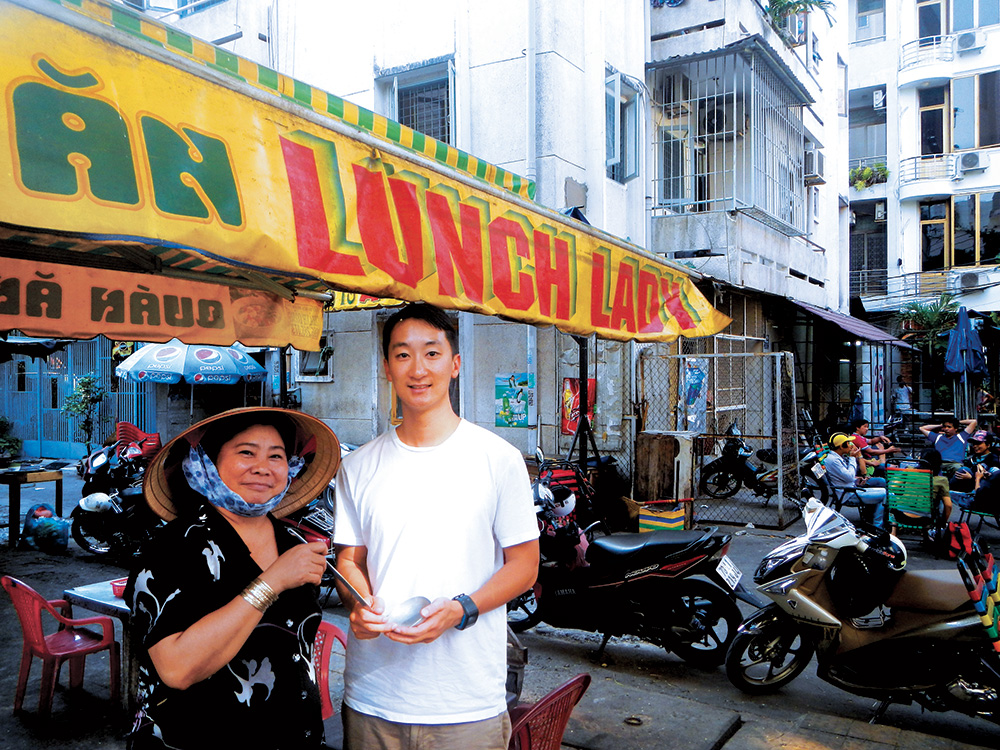
BRIAN WOO
When did you discover your love of Vietnamese food?
I have always enjoyed Vietnamese food but didn’t really know too much about it until I visited Vietnam in 2013. At that time I only knew about pho and banh mi, which are typical breakfast dishes. The Vietnamese start their day early, so being on holiday and all, by the time I got up, all the breakfast places were closed. I was travelling around Ho Chi Minh and Hanoi, wondering the whole time where all the pho was. I saw all these signs featuring Vietnamese dishes I had never had before. They were everywhere and more common than pho.Tell us about the Lunch Lady, the original Co Thanh.
After experiencing these new Vietnamese dishes, I started researching where I could find the best of each dish; where I could go for bun cha and bun bo Hué. The Lunch Lady, Co Thanh, kept on popping up on my search. I visited her street-side stall, where she would do a different soup base every day for lunch. I had to try everything.
How do you pronounce Co Thanh?
You don’t pronounce the “H” sound, so it’s “co tan”. Co means miss or madam and Thanh is the Lunch Lady’s name.
What inspired you to open Co Thanh in May?
When I opened Co Thanh, I wanted to pay homage to the Lunch Lady and bring her recipes to Hong Kong. If it wasn’t for her, this wouldn’t have happened. I asked for her blessing and if I could name the restaurant after her. She said she felt honoured.
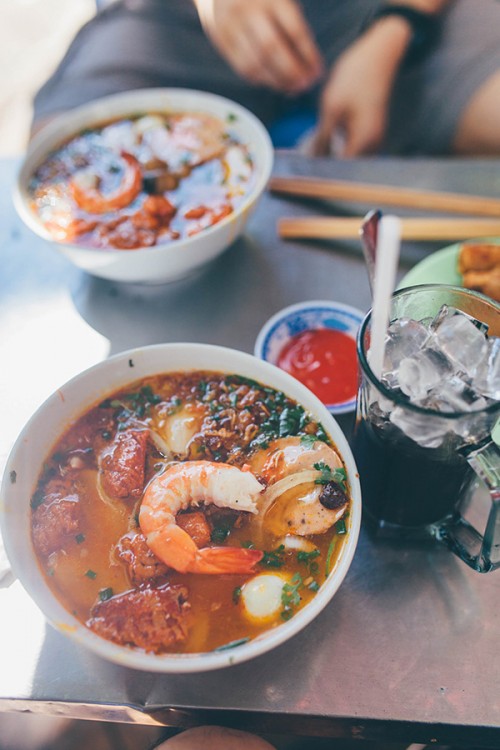
How did you convince the lunch lady to teach you?
I started eating there every day and asked her if she taught people. She said no. I found another woman that was willing to teach me. She made two different soup bases every day, so I learned how to make that through the help of a translator.
I would then take my soup to the Lunch Lady for feedback. We started talking, and after seeing how serious and dedicated I was, she started telling me what to do. I would follow her recommendations, make adjustments and bring it back the next day for her to try. Finally she said, “You know what? I’m pretty much teaching you already. You’re very persistent. You seem like you have some talent. Why don’t I just teach you?”
Had you had any culinary training before?
No, but I have always had an interest in cooking and food. Both my grandparents and my parents like to cook. When Three Monkeys opened, I played a more managerial role. My partners and I hired the chefs and bartenders. It wasn’t as hands-on as this.
What was it like working for the Lunch Lady? Any memorable moments?
We scheduled for me to go back the following month and that’s when I started working for her, on and off for three years. We went to the market every morning at 5am, looking for fresh ingredients. Some were foreign to me and I learnt how to choose them. Take fermented fish. What makes it good? What is the difference between three months of ageing and more? We would cook and prep until service. Afterwards, she would save some of the ingredients for me and I would take them home in the afternoon to practise making the soup broths. I would peel shrimp for her, watch her cook. Then I graduated to serving lunch. One of my most memorable moments was her giving me one of her soup ladles: “Here is your gift, and now it is your turn to serve.”
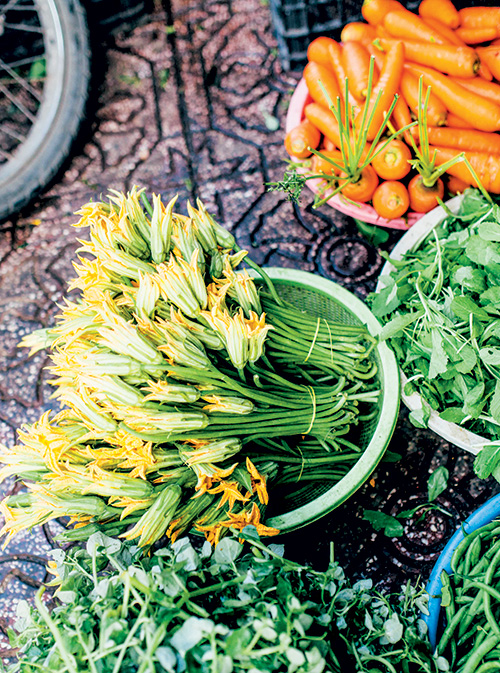
What would you say makes Co Thanh stand out from other Vietnamese restaurants?
We don’t serve pho. I want our diners to experience what I experienced in Vietnam. If pho was available, I probably would’ve just eaten that. I want people to step out of their comfort zone and try something else. One of the philosophies I have is that we don’t cut corners on anything. We use the best and freshest ingredients. Our seafood is fresh from the market every day. I learned in Vietnam that good food is all about freshness and quality. We also fly in 70 per cent of our ingredients from Vietnam, as I don’t think there are substitutes for artisanal ingredients like Vietnamese fish paste and fermented shrimps. We make our bread in-house and we use a special flour with a lower protein content that makes our baguettes more airy.
What is your aim for Co Thanh?
We have been invited to open in New York. The Lunch Lady is already quite famous – ever since she was featured on Anthony Bourdain’s No Reservations. Bourdain is opening up Bourdain Market in 2019, so their team has invited us to open there as a permanent vendor, along with 30 others. A lot of people have also graciously reached out to us about opening in Tokyo, Singapore and Indonesia.


